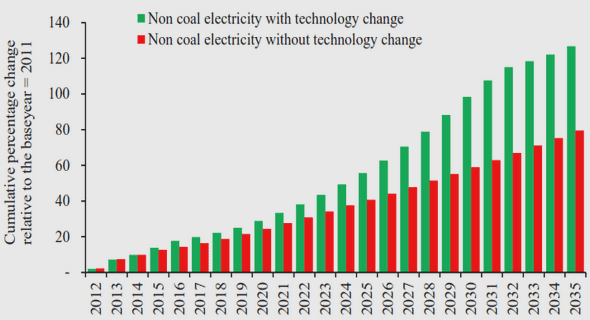(Downloads - 0)
For more info about our services contact : help@bestpfe.com
Table of contents
Introduction
Current Problematic: Global outlook
Phase change materials for cooling and heating applications
PCM systems for building applications developed by I2M of Bordeaux
Box shape tube bundle: Napevomo house
Slabs PCM system: Sumbiosi house
Further Research
Departure point for the present work
Problem statement
Thesis Objectives
Thesis Structure and Methodology
Methodology
1 Theoretical background and literature review
1.1 Scope
1.2 Phase Change Materials
1.2.1 Organic materials
1.2.2 Inorganic materials
1.2.3 Eutectic materials
1.3 Encapsulation of phase change materials
1.4 Physical phenomena during phase change
1.4.1 Dimensionless numbers associated with phase change
1.4.2 Experimental Approaches
Melting in rectangular vessels
Melting in spherical capsules
Melting in cylindrical vessels
1.4.3 Numerical Approaches
1.4.4 Empirical correlations for conduction and convection during phase change
1.4.5 Visual tracking of the melting front
1.5 Basic concepts in Image Processing
1.6 Concluding Remarks
2 Air-PCM heat transfer unit definition
2.1 Scope
2.2 Design of an air-PCM heat exchanger unit
2.2.1 Methodology for the design of an air-PCM unit
2.2.2 System Overview
2.2.3 Physical phenomena involved in phase change applications for cooling and heating
Global Phenomena
Local Phenomena
2.2.4 General Analysis
Operational Architecture (Structural Analysis)
2.2.5 Functional Analysis
2.2.6 Keywords search and analysis
Matrix Description
Matrix Analysis
Selection of the line of evolution
2.3 Concluding remarks and perspectives
3 Experimental Approaches
3.1 Scope
3.2 Experimental setup and procedures
3.2.1 Design of the experiment
3.2.2 Experimental setup
Experimental Apparatus
Air-PCM heat exchanger
PCM selection
Metrology of the experimental setup
3.2.3 Experimental Procedure
Airflow rate measurements
Temperature measurements
Testing protocol
3.3 Experimental results and discussion
3.3.1 Melting cycle results
Temperature measurements:
Image Analysis
3.3.2 Solidification cycle results:
Temperature measurements
Image Analysis
3.4 Thermal performance of the unit
3.4.1 Data processing for thermal performance evaluation
Global Domain
Local Domain
3.4.2 Results and Analysis of the thermal performance evaluation
Global Domain
Local Domain
3.5 Physical phenomena identification
3.5.1 Physical phenomena related to phase change
3.5.2 Dimensionless numbers associated with an air-PCM heat exchanger
3.5.3 Results from the phenomena identification by dimensionless numbers
3.6 Concluding remarks
4 Modeling of a tube bundle type air-PCM unit
4.1 Scope
4.2 Experimental Correlations
4.2.1 Previous analysis before obtaining the correlations
4.2.2 Statistical tests to validate the multiple linear regression
4.2.3 Results from the correlations for the melting fraction
4.3 Thermal resistance model
4.3.1 Problem statement for the model
4.3.2 Resolution methodology
4.3.3 Assumptions
4.3.4 Mathematical formulation
Air sub-domain:
Wall sub-domain:
PCM sub-domain:
4.3.5 Initial and boundary conditions
4.3.6 Numerical Resolution
4.3.7 Validation of the model
Validations from the First tube
Results from the eighth tube
Global validation of the heat exchanger
4.4 Non-isothermal phase change with natural convection model
4.4.1 Main assumptions for the model
4.4.2 Energy conservation in the air
4.4.3 Energy conservation in the wall and PCM
4.4.4 Supplementary assumptions
4.5 Concluding remarks
5 Building Applications
5.1 Scope
5.2 Mobile air-PCM unit
5.2.1 PCM containers
Filling of the tubes with RT21
Filling the tubes with SP25E
5.2.2 Unit Structure
5.2.3 Experimental setup and Procedure
5.2.4 Results under controlled conditions : Office room at I2M laboratory
Results and analysis
5.2.5 Results under real conditions : Sumbiosi PEH
Platform overview
Metrology of the platform
Results and analysis
5.3 Concluding Remarks
General Conclusions
Limitation of the Research
Regarding the design
Regarding the experimental approaches
Regarding the modeling approaches
Regarding the building application
Perspectives and future research
Regarding the design
Regarding the experimental approaches
Regarding the modeling approaches
Regarding the building application
Bibliography




